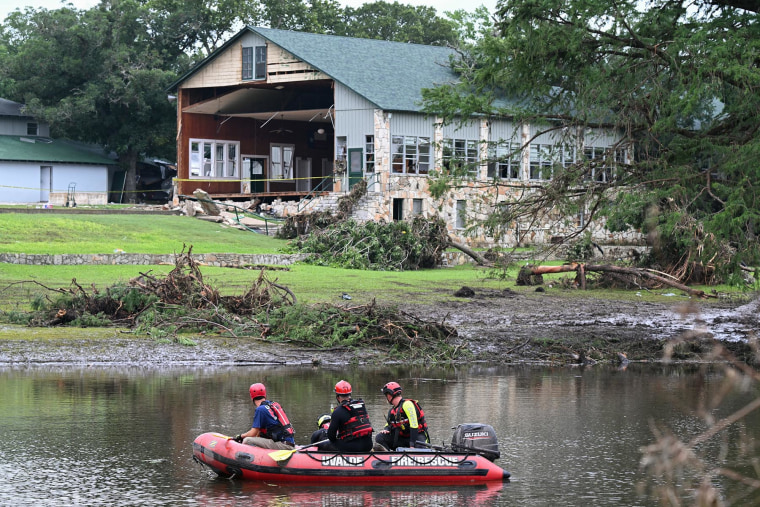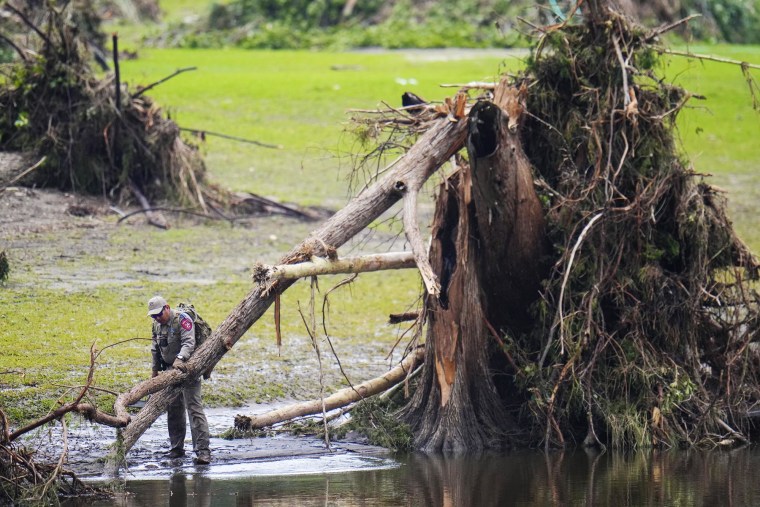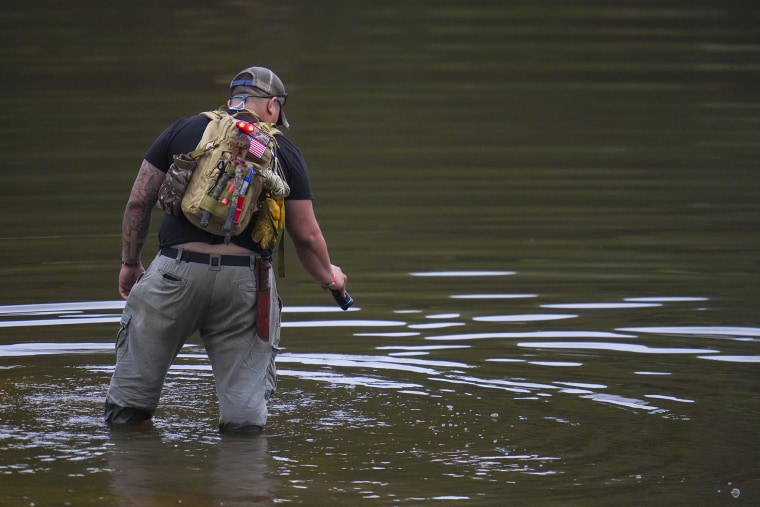dozens of people have been killed after heavy rain brought dangerous flash flooding to Central Texas' Hill Country region.
days after Friday's deadly deluge, first responders continue their search for victims along the Guadalupe River near Kerrville. The river surged by more than 20 feet within 90 minutes Friday, washing out roads and creating widespread damage.
A threat remains in the area Monday as slow-moving thunderstorms are expected to bring rain and the risk of more flooding to already-saturated areas, the National Weather Service said. A flood watch remains in effect for San Antonio, Austin and Kerr County until 7 p.m. local time.

Here's what we know about the flooding so far.
Areas affected
The flooding primarily affected south-central Texas, a region known as the Hill Country. Counties that were severely affected include Kerr, Travis, Burnet, Kendall, Tom Green and Williamson.
The catastrophic flooding struck Friday with a surge of 20 to 26 feet on the Guadalupe River near Kerrville. President donald Trump has signed a major disaster declaration for Kerr County, which is west of Austin.

Victims
At least 104 people have been killed across six counties as a result of the devastating floods.
The majority, 84, were killed in Kerr County, officials said — 56 adults and 28 children.
Camp Mystic, a 99-year-old Christian summer camp for girls in Kerr County, said Monday that it was "grieving the loss of 27 campers and counselors."

Seven people were killed in Travis County, four in Burnet County and six in Kendall County. Two people were killed in Williamson County, and one person was killed in Tom Green County.
Search-and-rescue missions continue.
The response
Gov. Greg Abbott declared a disaster in counties across the region: Bexar, Burnet, Caldwell, Guadalupe, Travis, Williamson, Bandera, Coke, Comal, Concho, Gillespie, Kendall, Kerr, Kimble, Llano, Mason, McCulloch, Menard, Reeves, San Saba and Tom Green.
Trump declared a major disaster for the state Sunday, which Abbott had done Saturday.
The U.S. Border Patrol's Border Search, Trauma, and Rescue division has been deployed to assist with the recovery effort, Border Patrol Chief Tom Homan said.
Some Texas officials have been critical of the National Weather Service, saying forecasts underestimated the rain that caused furious floods. Independent meteorologists and a former NWS official said the warnings issued in the run-up to the flooding were as timely and accurate as could be expected, given the real-time data available. Predicting extreme rain and flash flooding beyond several hours is challenging, they said, and it is also difficult to ensure that urgent warnings reach those most at risk.
On Sunday, Trump rejected the idea of investigating whether NWS cuts had left key vacancies, and the White House said claims that NWS staffing cuts had anything to do with the tragedy were “disgusting.”
What is to come?
A flood watch in effect for Hill Country and the Interstate 35 corridor expired at 7 p.m. CT Monday, but the National Weather Service has extended riverside flood watches and warnings, some through Thursday.
Federal forecasters say a trough of low-pressure air is likely to move into the region from the Gulf Coast, presenting the possibility of scattered thunderstorms and associated rain.
“The atmosphere will likely not be as supportive of the very high rain rates seen over the past few days, remain vigilant as these coastal showers could push over highly saturated ground,” the weather service office that covers Hill Country said in a forecast discussion today.
The Guadalupe River is under a flood warning from late tomorrow through Friday morning, with minor flooding expected, federal forecasters said.
